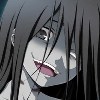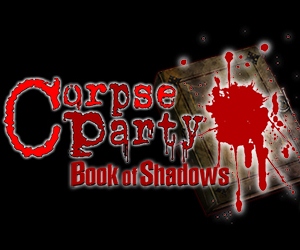 Game: Corpse Party: Book of Shadows
Game: Corpse Party: Book of Shadows
Developer: Team GrisGris
Publisher: XSeed
Available on: PlayStation Vita, PSP
Reviewed on: PlayStation Vita
The original Corpse Party was released in 1996 on Japan’s now archaic home computer, the NEC PC-9801, and was subsequently remade twice, first as Corpse Party: Blood Covered on Windows PC in 2008 and then on the PSP in 2011 as Corpse Party: Blood Covered Repeated Fear. Despite the many incarnations, it was the most recent version that acts as the prequel to semi-remake Corpse Party: Book of Shadows on the PSP and Vita.
More interactive novel than actual game, Corpse Party: Book of Shadows is dark, shocking and slightly harrowing in places – but is it enjoyable to play?
STORY: The central narrative revolves around the Heavenly Host Elementary School, a building torn down after a spate of brutal murders that left a number of students and teachers dead. Several decades later, a new school, Kisaragi Academy, has been built over the ruins of Heavenly Host. During a cultural day, a group of students perform a ritual to ensure that they’ll remain friends forever, only to wake up in a kind of parallel universe, trapped in the dilapidated and deadly halls of Heavenly Host.
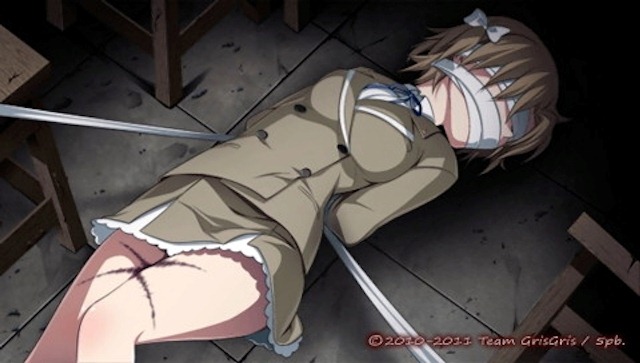
Book of Shadows is part-sequel, part-remake, following the same group of students from the last game in the same situation. This is explained by a bizarre loophole in time that sees them reliving the terrifying events over and over again, but experiencing strong feelings of déjà vu rather than remembering what actually happened. While the main protagonist in recent iterations was a young man named Satoshi, in Book of Shadows the focus shifts onto Naomi, one of Satoshi’s friends and a member of the original cast.
When the game begins we’re shown a cutscene of Naomi’s mother trying to talk to her near-catatonic daughter, leading to a violent outburst. It seems that Naomi survived the horror of Heavenly Host, and is deeply traumatised by what transpired – and struggling to hold on to her sanity as no one seems to remember her classmates that died, particularly her best friend Seiko. The narrative then jumps back to the night before the fateful “cultural day”, when Naomi and Seiko are having a sleepover. It’s here that the characters are initially established, and here that the game makes its first – largely successful – attempts to make you care about them. Seiko’s romantic feelings for Naomi are made obvious, partly through her dialogue and partly through the incredibly unsubtle still images of the two schoolgirls bathing one another (seriously). But, while it might appear to be little more than slightly suspect fap material, it seemed to me that the whole sequence is set up to strengthen the player’s bond with both girls, as well as reinforce how close their relationship is – it’s just not particularly tasteful.
There’s little filler or build-up beyond this short section before the students are seen performing the ritual, which Satoshi is terrified of carrying out for reasons he can’t understand (none of them can remember what happened in their previous incarnation). With the ritual over, Naomi wakes up with Seiko in the foreboding halls of Heavenly Host, separated from the others and as confused as she is frightened. When the two are quickly separated, Naomi has a flash of déjà vu and sees Seiko hanging from a noose – but quickly realises that she can prevent such an end from occurring if she acts fast and finds her friend. So begins the first of seven chapters, all of which centre around the premise of a main character seeing future horrors in flashes and attempting to subvert a grisly death.
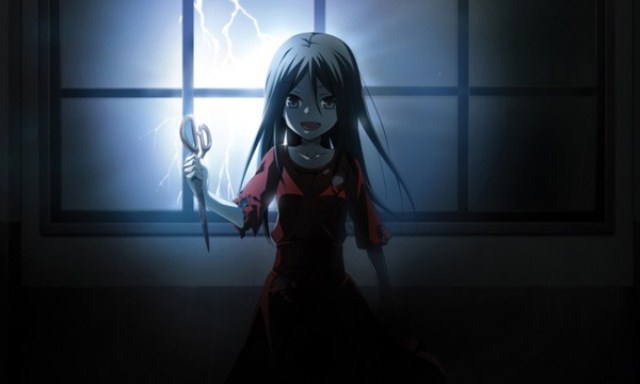
As the narrative progresses you’ll take control of several protagonists and discover that Heavenly Host is haunted by a group of malevolent ghosts, the sinister spirits of the children and teachers murdered in the original horror back in 1953. The school now has so many lost souls wandering its hollow corridors that it’s almost sentient, and the terrors it doles out are beholden to the whims of an evil spirit known as The Girl in Red. The story is incredibly creepy, and developers Team GrisGris pull no punches in their desire to shock the player, ladling on the J-horror elements and drenching it all in buckets of blood and gore.
GRAPHICS: The original Corpse Party was presented as a top-down adventure similar in style to a gruesome Legend of Zelda, but the Vita version uses the same 16-bit sprites sparingly, only as visual representations of the characters on a grid-like map used to traverse the dark halls and rooms of Heavenly Host. The game itself is simply a series of still images – mostly of decaying corridors and creepy, grime-strewn schoolrooms – which can be searched with the cursor for points of interest to advance the story. While the environments are well-drawn, they’re also hand-crafted, so even the Vita’s screen can’t make them dazzle. The static cut-scenes are brighter and smoother, but are few and far between beyond the opening scene and a handful of flashbacks throughout.
What Corpse Party: Book of Shadows does do well, is deliberately impair your vision by way of low brightness and an eerily drab colour palette, making it hard to fully make-out shapes in the darkness, forcing you to use your imagination to survey rooms and corridors.
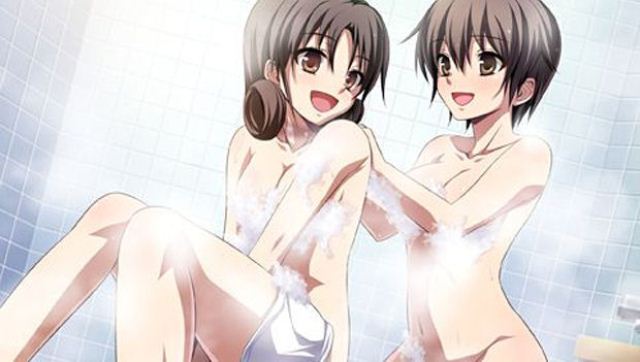
SOUND: In terms of atmosphere, very few games ask so little of the player for such a return. Barely classifiable as a game (it’s really an interactive novel), Corpse Party: Book of Shadows nevertheless manages to be incredibly unsettling and immersive, thanks in large part to its sound direction.
The voice acting is great, and although I was initially put off by the fact that it’s all in Japanese, it soon becomes of great benefit to the atmosphere as you read the script from grey or blue bubbles at the foot of the screen, but pick up the inflections and accents and emotions in the voices of the characters. A young girl shrieking in sudden and abject terror is affecting regardless of her native tongue, and Book of Shadows features plenty of that.
Asami Imai’s haunting opening score is exceptional, and the incidental music that builds as events unfold had me holding my breath without realising it on more than one occasion. Played with headphones, Book of Shadows is incredibly scary at times, as whispered words and ambient sound effects conspire to unsettle and disturb at every turn.
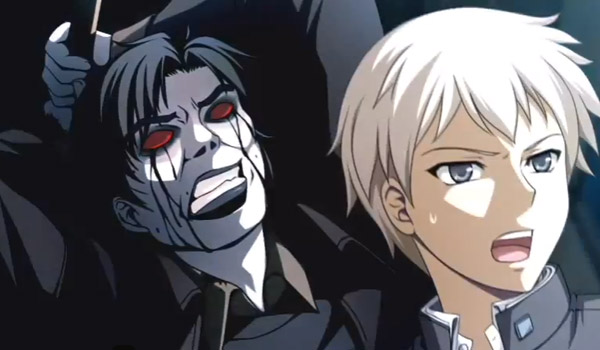
GAMEPLAY: As I said earlier, Corpse Party: Book of Shadows is hardly a game at all. Besides selecting which room to visit via the aforementioned grid map, gameplay extends no further than pressing X to speed up the text speed and occasionally making 50/50 decisions.
You’ll travel the halls of Heavenly Host, finding dead bodies and the clues to how they met their end, or else discovering deadly traps (the corridor full of piano wire is a particular treat) and the means to bypass them. Now and then you’re given a decision to make, some of which are timed, and making the wrong choice can lead to either the death of your character or an NPC you’re trying to save. Interestingly, the “wrong” choice doesn’t always end the game, but can influence events in future chapters.
Your progress is measured by a “darkening” meter, which fills with every action you perform and will trigger certain events in certain rooms depending on its percentage. Unfortunately, this leads to an awful lot of backtracking and aimless wandering, often only rewarding you with progression after you’ve pulled the same lever four times just in case it changes something. There’s no handholding whatsoever here; no mission log, no diary, and a lot of red herrings in terms of the items you’ll find in the various rooms. For example, when I’m facing a room bobby-trapped with piano wire, and there’s a pair of bloody scissors elsewhere, my mind immediately thinks to cut the wire and proceed – Book of Shadows celebrates no such logic. The scissors are simply mentioned and not collectible, and the only way to circumvent the wire and progress is to visit each room and each lever several times until the darkening meter is sufficiently full – at which point the screen becomes covered in a red mist and you’re faced with quick choices to avoid a gruesome fate.

If not for the constant backtracking – not aided at all by the incredibly slow movement around the map – Book of Shadows would be more enjoyable, but unfortunately it can occasionally feel like an uphill slog. The option to save the game anywhere takes away most of the peril and a much-needed element of permanent choice, but also allows you to experiment with different options and story beats so you can see all the possible endings in one sitting – which is a good thing, as you’re unlikely to want to play this more than once given its slow pace and the diminished return of its initially-shocking scares.
That being said, this game is genuinely shocking, and as a pure horror is hard to beat. Some of the deaths are described in such detail that they stay with you long after you put the Vita down. One particular sequence has a young girl describing being thrown against a wall so hard that the impact dismembers her, and how the eviscerated intestines clinging to the wall above her severed head are her own, observed in the last few seconds of consciousness before her death. It’s unpleasant enough to simply write that out in the clinical manner of a review, let alone listen to her describe it.
LONGEVITY: Corpse Party: Book of Shadows is a fairly decent size, taking between 90 minutes and two hours to complete each of the seven chapters. The quick save option negates the need for multiple playthroughs, however, so it’s unlikely to entice you back unless you’re particularly thrilled by the narrative.

There are a number of unlockables to collect, including testimonies from the cast, music tracks and artwork, but you’ll find most of them in the course of a normal playthrough.
VERDICT: Judged as a game, Book of Shadows is horribly deficient. It’s really just a series of static screens that you “mouse” over with a cursor, interspersed with occasional split decisions and cut-scenes. However, as an interactive horror novel it’s excellent, delivering a genuinely frightening and horrifying experience.
The writing is excellent throughout, and the voice-acting works in combination with the ambient sound effects and unsettling imagery to deliver an immersive experience that will get under your skin for a while after it’s over. Don’t let the Manga-esque visuals and cutesy box art fool you, this is a true horror and not for the faint of heart.



